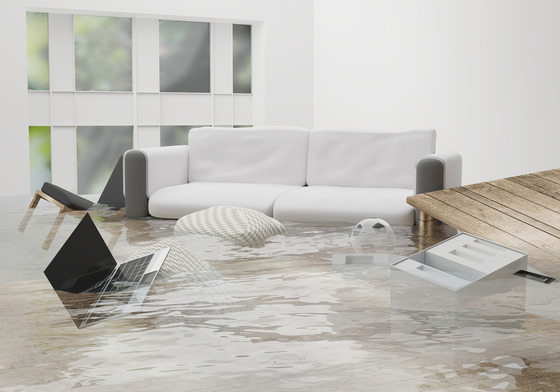Addressing water that has entered your home or business may seem simple at first glance. However, it’s worth emphasizing that effective and extensive water damage restoration involves many aspects. Handling the damage correctly in every stage, from water extraction, cleanup, and drying to the repair and restoration work, is crucial in avoiding long-term damage.
Many online water damage tips share advice on what to do after leaks, floods, and other emergencies, but it’s also helpful to learn what not to do after water damage in your property.
If you find yourself dealing with water damage in your home or business, avoiding these actions can help you get your routine back to normal.
DON’T Use Electronics
When cleaning up water damage in your property, the first thing that may come to mind is to use whatever resources are available to start drying up the building. It’s natural to want to extract the water and start getting your property back to its pre-loss state as quickly as possible, but a hasty move can worsen the situation.
Avoid using water pumps, wet/dry vacs, or fans to remove leftover moisture and dry the affected area if you are standing on a damp floor. It’s also best not to plug into outlets that the water may have reached, as the conditions may have created electrical hazards that can cause more accidents.
It’s best not to use any electric appliance to speed up the drying process until you know your property is safe.
DON’T Clean Up Contaminated Water
If the water inside your building is a result of hurricane flooding, a flash flood, a broken sewer line, or a backed-up drain, never attempt to clean it up on your own. Water in these events falls under Category 3, which means it contains pathogenic agents that create serious health risks.
Keep yourself and your loved ones safe and healthy by staying out of affected areas until they have been cleaned and disinfected by certified professionals.
DON’T Leave Wet Items Together
Wet fabric and paper items can quickly become breeding grounds for mold. As such, it’s best to separate any damp clothing, books, magazines, and other similar items you may have for drying as soon as possible. The longer you allow them to be stuck together, the easier it will be for mold to grow and spread inside your building.
It’s also a good idea to prop up items off your floors. For example, small saucers can be placed under furniture legs to raise furniture off the wet surface and allow the floor to dry more quickly.
DON’T Redecorate Right Away
Seeing your home or business in disarray after the water has turned it upside down is not easy. However, it’s also crucial to put off the repairs and to redecorate while cleanup and restoration work is ongoing. Attempting to repaint wet walls, for example, will only be a surface-level fix. You may start seeing peeling or patches of stains on your walls soon because of the remaining moisture.
For the best results, ensure the walls and structures are thoroughly dry before decorating again.
DON’T Attempt To Fix Soggy Ceilings Alone
Floors and ceilings affected by water can be compromised. As such, it’s best not to turn on any fixture on wet ceilings or step inside rooms with sagging floors or ceilings.
More importantly, don’t attempt to repair soggy ceilings on your own. The sags and bulges in these water-damaged structures can indicate that they are barely holding back water, and a wrong move can cause them to collapse. Leaving this task to professionals can help you avoid costly accidents and injuries.
DON’T Delay Getting Help
Water damage restoration can already be an extensive and expensive process on its own. With that said, waiting too long to address the damage can add to your costs and prolong your road to recovery further.
This is why avoiding a “wait and see” approach is crucial. Water damage can already cause more problems behind walls, under the flooring, and in hard-to-reach areas as you wait. Unchecked moisture can also encourage mold to grow and spread inside your building.
Following water damage tips on your own can only do so much. If you’re convinced the situation is more than you can handle, don’t wait any longer and get help from a certified water damage restoration company.
DON’T Do It All on Your Own
One of the most important factors to remember when dealing with water damage is that it often requires special tools and industry-approved techniques. Whether water damage came from flooding or a burst pipe, putting your property back in a stable and healthy condition needs the skills and equipment of experts.
The benefits of getting help from professionals go beyond having your water damage handled carefully and correctly. Ultimately, this lets you avoid recurring damage concerns and move on from this event with little to no disruption.
Final Reminders
Every water damage event is different, and the situations you may have to deal with after an emergency varies. A slow water leak in the kitchen may cause easily repairable issues in one room, while flood damage may cover a large area of your building and require extensive repairs.
No matter the nature of your damage, the crucial thing is that you get in touch with professionals right away. The sooner you ask for help, the sooner you can get things back to normal.
For more practical water damage tips, contact a Restoration 1 team near you. Our service locations are staffed with friendly and knowledgeable pros who can assess your damage and give expert advice for free. We also offer a range of cleanup and restoration services to address any water damage in your property – call us anytime for expert help!


